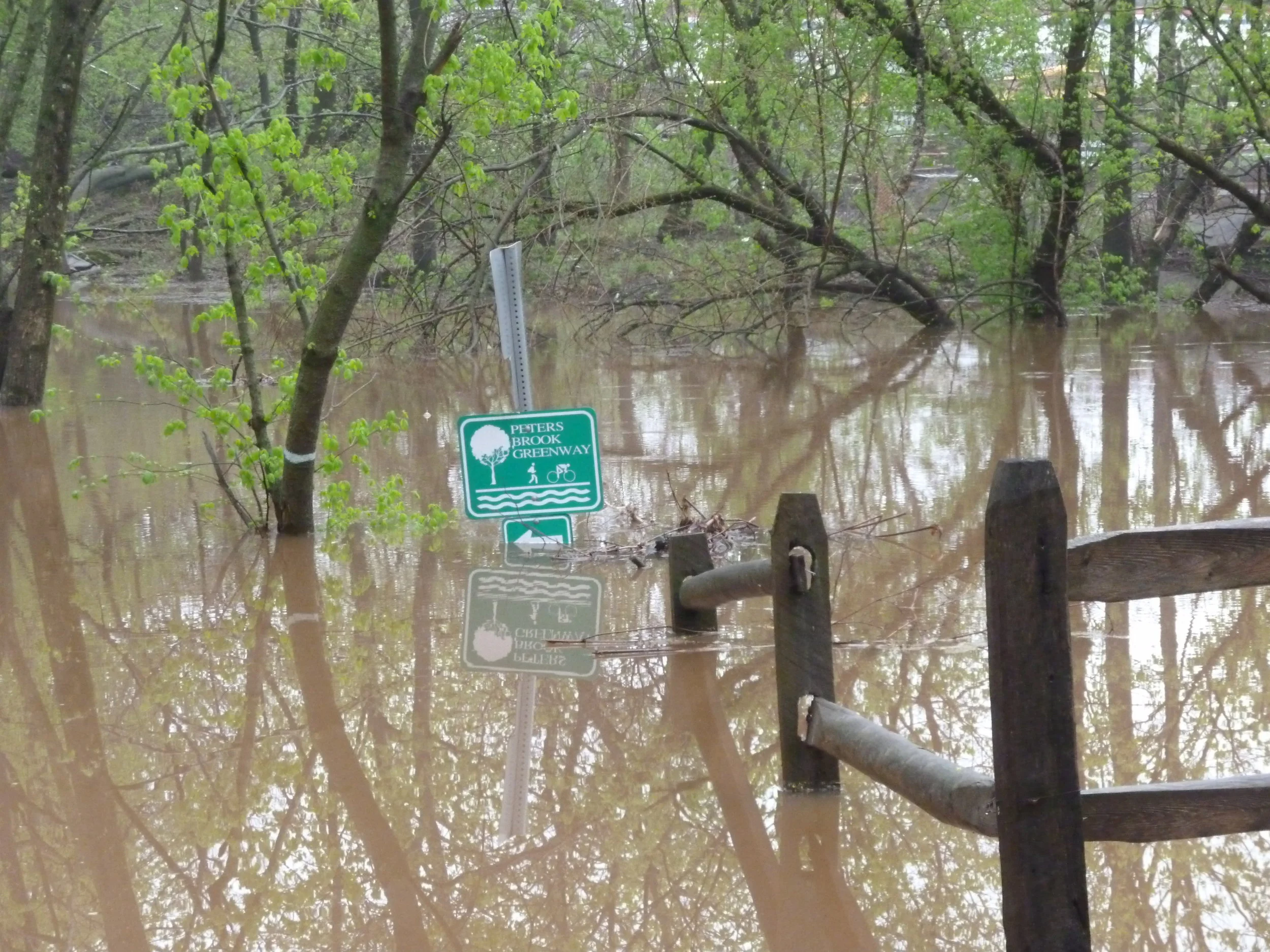The Peters Brook watershed is contained in the towns of Bridgewater, Somerville, and Raritan, which are characterized by older, densely populated residential neighborhoods where stormwater retention is minimal. The confluence of Peters Brook with the Raritan River is approximately 3 miles upstream of the New Jersey American Water Company intake that provides treatment and distribution of more than 124 million gallons, on average, of potable water per day to residents of New Jersey. The source-water for water purveyors is susceptible to impairment from bacteria (such as fecal coliform and E. coliform) and pathogens, pH fluctuations, and nutrients (causing algal blooms), requiring increased chemical use for neutralization and/or removal, consequently increasing treatment costs and sludge generation from residuals.
Since 1996, the AMNET (Ambient Biomonitoring Network) site AN0376 has been listed by EPA and NJDEP as impaired by fecal coliform, and a low to medium priority for Biological Impairment due to an unknown cause, including a suboptimal habitat rating in 2004. In September 2003, a TMDL was approved by EPA for fecal coliform impairments, "TMDL for Fecal Coliform to Address 48 Streams in the Raritan Water Region," that included Peters Brook.
The Peters Brook Stormwater Reduction Project focuses on implementing small, low-cost best management practices (BMPs), such as rain gardens and rain barrels, that will reduce the amount of stormwater, which carries pollutants including fecal coliform, that reaches the Peters Brook. In the summer of 2010, NJWSA worked with Rutgers Cooperative Extension to host four"Build a Rain Barrel" workshops in targeted neighborhoods in Somerville, Bridgewater, and Raritan. The kick-off project was the installation of two 500 square foot rain gardens planted at Van Derveer School in Somerville in June 2010 that were designed by the Rutgers Water Resources Program.

